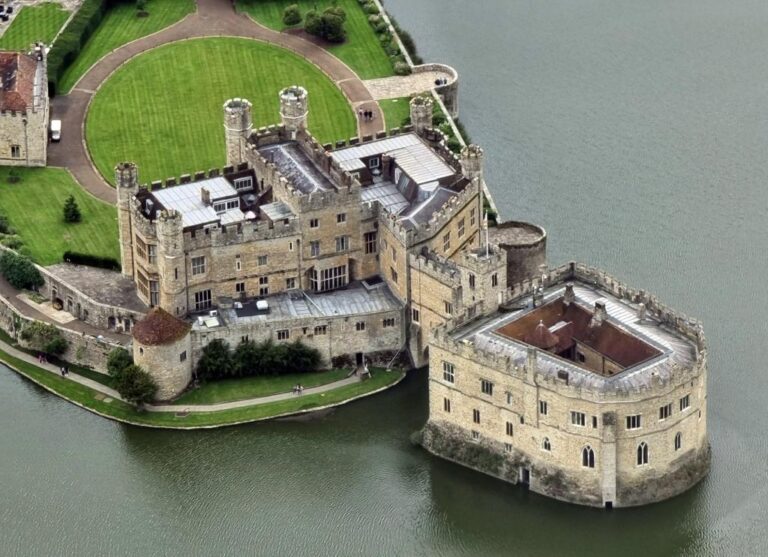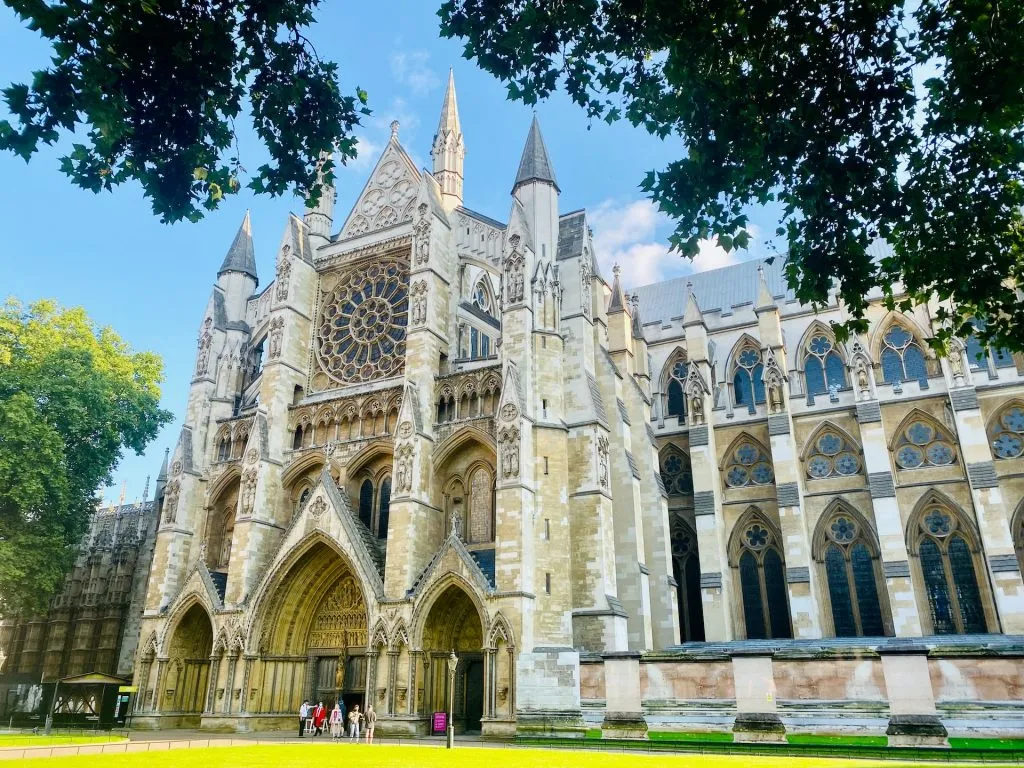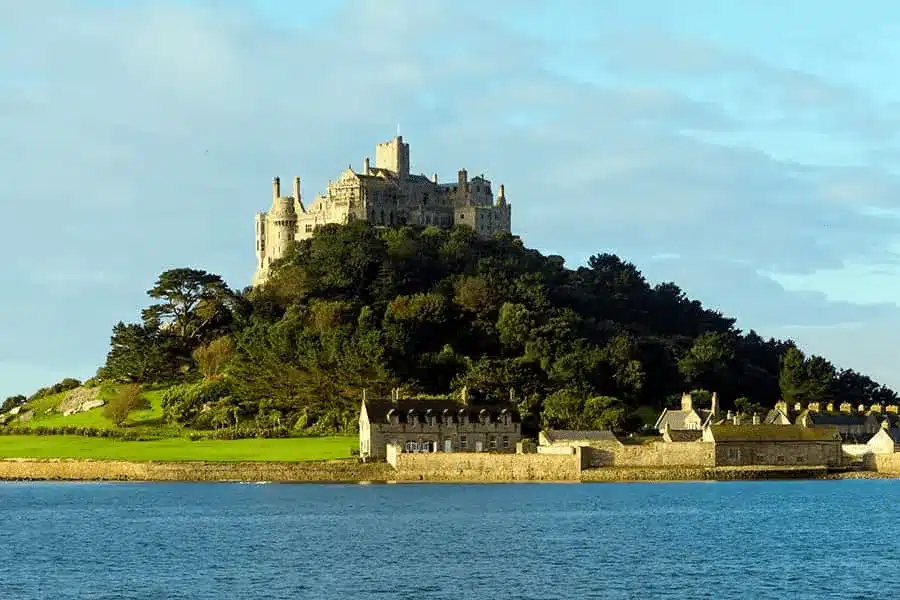The United Kingdom stands as a living testament to centuries of captivating history, offering an unparalleled journey through time for those eager to explore its storied past. From ancient stone circles to medieval castles and grand palaces, the historical places to visit UK are as diverse as they are numerous. These sites not only serve as windows into bygone eras but also play a crucial role in preserving and sharing the nation’s rich cultural heritage.
Historical tourism in the UK has become increasingly popular, attracting millions of visitors each year who seek to immerse themselves in the tales of kings and queens, epic battles, and groundbreaking innovations that have shaped the world. The historical places in UK offer more than mere sightseeing; they provide an interactive educational experience, allowing visitors to walk in the footsteps of historical figures and gain a deeper understanding of the events that have molded modern Britain.
From the iconic landmarks of London to the rugged castles of Scotland and the ancient ruins scattered across England, Wales, and Northern Ireland, the UK’s historical landscape offers an enriching adventure for history enthusiasts and casual tourists alike. Let’s embark on a journey to discover the most captivating historical sites this island nation has to offer.
Top historical sites in England
England boasts a wealth of historical places to visit, each offering a unique glimpse into the nation’s rich past. From ancient monuments to medieval castles and royal palaces, these sites stand as testaments to England’s enduring legacy.
London’s historical treasures
The capital city is home to some of the most iconic historical places in England. The Tower of London, a UNESCO World Heritage Site, has stood as a symbol of royal power since William the Conqueror built the White Tower in 1066. This fortress-palace, with its imposing stone walls and iconic white tower, has played a crucial role in English history, serving as a royal residence, prison, and treasury. Today, visitors can explore its rich history, marvel at the Crown Jewels, and learn about the Tower’s famous prisoners and executions.
Westminster Abbey, another jewel among historical places to visit in England, has been the site of royal coronations since 1066. This Gothic masterpiece not only serves as a place of worship but also as the final resting place for many of England’s monarchs and notable figures. The Abbey’s intricate architecture, stunning stained glass windows, and centuries of royal history make it a must-visit destination for history enthusiasts.
Buckingham Palace, the official London residence of the British monarch since 1837, stands as a symbol of the modern monarchy. While it began as a townhouse for the Duke of Buckingham in 1703, it has since evolved into the administrative headquarters of the monarch. Visitors can tour the State Rooms, witness the Changing of the Guard ceremony, and explore the palace’s rich collection of art and furnishings, offering a glimpse into the life of British royalty.
Ancient wonders
Among the most enigmatic historical places in England is Stonehenge, a prehistoric monument that has captivated imaginations for millennia. Built around 4,500 years ago, this ancient stone circle is a masterpiece of engineering and a powerful testament to the ingenuity of our Neolithic ancestors. The site’s alignment with the solstices, the long-distance transport of its massive stones, and its purpose continue to intrigue archaeologists and visitors alike.
The Roman Baths in Bath offer a fascinating glimpse into the life of Roman Britain. Built around 70 AD, this well-preserved thermal complex centered around the sacred hot spring known as Aquae Sulis. The site features not only the impressive Great Bath but also a temple dedicated to Sulis-Minerva, the goddess of healing. Visitors can explore the ancient bathing rooms, see the original Roman drainage system still in use, and learn about Roman bathing rituals and engineering.
Medieval marvels
For those seeking places to visit for history lovers UK, Warwick Castle stands as a formidable example of medieval military architecture. Built by William the Conqueror in 1068, the castle has witnessed centuries of English history, from the Wars of the Roses to the English Civil War. Today, visitors can explore its impressive towers, ramparts, and Great Hall, experiencing the grandeur of medieval life while learning about the castle’s role in shaping English history.

York Minster, one of the largest Gothic cathedrals in Northern Europe, is another must-visit destination for history enthusiasts. With a history stretching back to the 7th century, the current cathedral took over 250 years to build, from 1220 to 1472. Its stunning architecture, including the Great East Window (the largest expanse of medieval stained glass in the world), and rich history make it a testament to England’s religious and cultural heritage. Visitors can explore the cathedral’s many chapels, climb the central tower for panoramic views of York, and delve into the history of Christianity in northern England.
These historical places in England offer a journey through time, from prehistoric mysteries to medieval grandeur and royal splendor. Each site tells a unique story of England’s past, inviting visitors to step back in time and experience the events and people that shaped the nation’s history.
Scotland’s historical gems
Scotland boasts some of the most captivating historical places to visit UK, offering a journey through time that spans centuries of rich and tumultuous history. For places to visit for history lovers UK, Scotland’s castles and battlefields stand out as must-see destinations, each telling a unique story of the nation’s past.
Edinburgh castle
Perched atop an extinct volcano, Edinburgh Castle is an iconic symbol of Scotland’s heritage and one of the most popular historical places to visit UK. This formidable fortress has witnessed countless sieges and played a pivotal role in shaping Scottish history.
The castle’s history stretches back over a millennium, with the oldest surviving building, St. Margaret’s Chapel, dating to the early 12th century. As you explore the castle grounds, you’ll encounter a tapestry of architectural styles reflecting its evolution over the centuries.
Edinburgh Castle has served many purposes throughout its long history. It has been a royal residence, military garrison, and prison of war. Today, it houses the Scottish Crown Jewels, known as the Honours of Scotland, and the Stone of Destiny, used in the coronation of Scottish monarchs.
Stirling castle
Another gem among places to visit for history lovers UK is Stirling Castle, perched high on a volcanic crag overlooking the city of Stirling. This magnificent fortress has played a crucial role in Scotland’s history, serving as both a formidable stronghold and a favored residence of Scottish royalty.
Stirling Castle’s strategic location, guarding what was once the farthest downstream crossing of the River Forth, made it a key military objective during the Wars of Scottish Independence. The castle changed hands several times between the Scots and English during this turbulent period.
The castle reached its architectural zenith during the reigns of James IV and James V in the 15th and 16th centuries. The Great Hall, Royal Palace, and Chapel Royal showcase the finest Renaissance architecture in Scotland. Today, visitors can explore these meticulously restored buildings and immerse themselves in the opulence of Scotland’s royal past.
Culloden battlefield
For those seeking to delve deeper into Scotland’s dramatic history, Culloden Battlefield near Inverness is one of the most poignant historical places to visit UK. This windswept moor was the site of the last pitched battle fought on British soil, marking a turning point in Scottish and British history.
On April 16, 1746, Jacobite forces loyal to Bonnie Prince Charlie faced off against government troops led by the Duke of Cumberland. The battle was brief but brutal, lasting less than an hour and resulting in devastating losses for the Jacobites. This defeat effectively ended the Jacobite rising and led to profound changes in Highland culture and society.

Today, visitors to Culloden can walk the battlefield, marked with flags indicating the positions of the opposing forces. The excellent visitor center provides in-depth information about the battle and its context, featuring artifacts, interactive displays, and immersive experiences that bring this pivotal moment in history to life.
These historical places to visit UK offer more than just a glimpse into Scotland’s past; they provide a tangible connection to the events and people that shaped the nation. Whether you’re exploring the grand halls of Edinburgh and Stirling Castles or reflecting on the somber history of Culloden, these sites offer unforgettable experiences for history enthusiasts and casual visitors alike.
Wales’ rich heritage
Wales, with its rugged landscapes and ancient legends, is home to some of the most impressive historical places in UK. From formidable castles to serene cathedrals, the country offers a wealth of sites that showcase its unique cultural and historical legacy.
Caernarfon castle
Among the most iconic historical places to visit UK is Caernarfon Castle, a medieval fortress that stands as a testament to the architectural brilliance of the Middle Ages. Built by King Edward I in the late 13th century, this UNESCO World Heritage site was designed not just as a military stronghold, but as a seat of government and royal palace.
Caernarfon’s distinctive polygonal towers and color-banded masonry were inspired by the walls of Constantinople, reflecting Edward I’s imperial ambitions. The castle’s Eagle Tower, with its triple-tower design, is particularly impressive and offers panoramic views of the surrounding landscape.
The castle gained renewed significance in 1969 when it served as the venue for the investiture of Prince Charles as Prince of Wales. Today, visitors can explore its well-preserved walls, towers, and courtyards, gaining insight into medieval warfare and royal life.
St. Davids cathedral
In stark contrast to the military might of Caernarfon, St. Davids Cathedral offers a glimpse into Wales’ spiritual heritage. Located in Britain’s smallest city, this magnificent cathedral is one of the most important historical places in UK for understanding Welsh religious history.
Built in the 12th century on the site of a 6th-century monastery founded by St. David, Wales’ patron saint, the cathedral has been a place of pilgrimage for nearly 1,500 years. Its purple-tinged stone walls and intricate wooden ceiling create an atmosphere of timeless serenity.
The cathedral’s treasury houses a collection of historic artifacts, including the 13th-century Holy Trinity Chapel with its remarkable carved stone reredos. The adjacent Bishop’s Palace, now in ruins, offers a fascinating look at medieval ecclesiastical life.
Conwy castle
Completing our trio of Welsh historical places to visit UK is Conwy Castle, another masterpiece of medieval architecture. Built for Edward I between 1283 and 1289, Conwy is considered one of the finest examples of late 13th century and early 14th century military architecture in Europe.
The castle’s eight massive towers and high curtain walls remain remarkably intact, offering visitors an authentic medieval fortress experience. From the battlements, you can enjoy breathtaking views of the surrounding mountains and the picturesque town of Conwy.
What sets Conwy apart is its integration with the town walls, creating one of the most complete walled towns in Europe. Visitors can walk the entire circuit of walls, imagining life in a medieval fortified town.
These historical places in UK showcase Wales’ rich and varied heritage, from the military might of its castles to the spiritual significance of its religious sites. Each offers a unique window into Welsh history, inviting visitors to step back in time and experience the events and cultures that shaped this proud nation.
Northern Ireland’s historical landmarks
Northern Ireland boasts some of the most intriguing historical places to visit UK, offering a unique blend of natural wonders, medieval fortifications, and modern historical sites. These landmarks not only showcase the region’s rich heritage but also provide visitors with unforgettable experiences.
Giant’s causeway
While not a man-made structure, the Giant’s Causeway is undoubtedly one of the most remarkable historical places to visit UK. This UNESCO World Heritage site, formed by volcanic activity some 60 million years ago, has been steeped in legend and history for centuries. The site features around 40,000 interlocking basalt columns, creating a natural wonder that has inspired myths and scientific inquiry alike.

According to Irish folklore, the causeway was built by the giant Finn MacCool as a bridge to Scotland. Today, visitors can explore the unique hexagonal rock formations, learn about the site’s geological significance, and enjoy breathtaking coastal views. The Giant’s Causeway stands as a testament to the natural forces that have shaped Northern Ireland’s landscape and the rich mythology that has grown around it.
Carrickfergus castle
For those seeking medieval history among the historical places to visit UK, Carrickfergus Castle stands as one of the best-preserved Norman castles in Ireland. Built in 1177 by John de Courcy, this imposing structure has played a military role for over 800 years, witnessing sieges and battles throughout its long history.
The castle’s strategic location on the northern shore of Belfast Lough made it a key defensive stronghold. Visitors can explore its massive stone walls, climb the towers for panoramic views, and delve into exhibitions detailing the castle’s rich history. From the medieval Great Hall to the 18th-century gun platforms, Carrickfergus Castle offers a journey through centuries of Irish history.
Titanic Belfast
A more modern addition to the historical places to visit UK is Titanic Belfast, a state-of-the-art visitor attraction opened in 2012. Located on the site where the RMS Titanic was built, this iconic building tells the story of the world’s most famous ship, from its conception in Belfast to its tragic maiden voyage.
The museum’s nine interactive galleries bring to life the story of the Titanic, exploring the shipyard, the launch, the maiden voyage, and the ship’s place in history and popular culture. Visitors can experience a virtual tour of the ship’s decks, learn about life on board, and explore the aftermath of the disaster. Titanic Belfast not only commemorates the ill-fated liner but also celebrates Belfast’s maritime heritage and industrial past.
These diverse historical places to visit UK in Northern Ireland offer a rich tapestry of experiences, from ancient geological wonders to medieval fortresses and modern historical attractions. Each site provides unique insights into the region’s natural, cultural, and industrial heritage, making Northern Ireland a must-visit destination for history enthusiasts.
Unveiling Britain’s historical tapestry
The United Kingdom’s tapestry of historical places to visit UK offers an unparalleled journey through time, from prehistoric wonders to medieval castles and modern marvels. Each region – England, Scotland, Wales, and Northern Ireland – contributes its unique flavour to the rich historical landscape. These historical places in UK not only serve as windows to the past but also as bridges connecting us to the events and people that shaped the nation. Whether you’re exploring ancient ruins, walking through grand palaces, or immersing yourself in interactive museums, the UK’s historical sites provide endless opportunities for discovery and learning. Embark on your own historical adventure and experience firsthand the depth and diversity of British history that continues to captivate and inspire visitors from around the world.